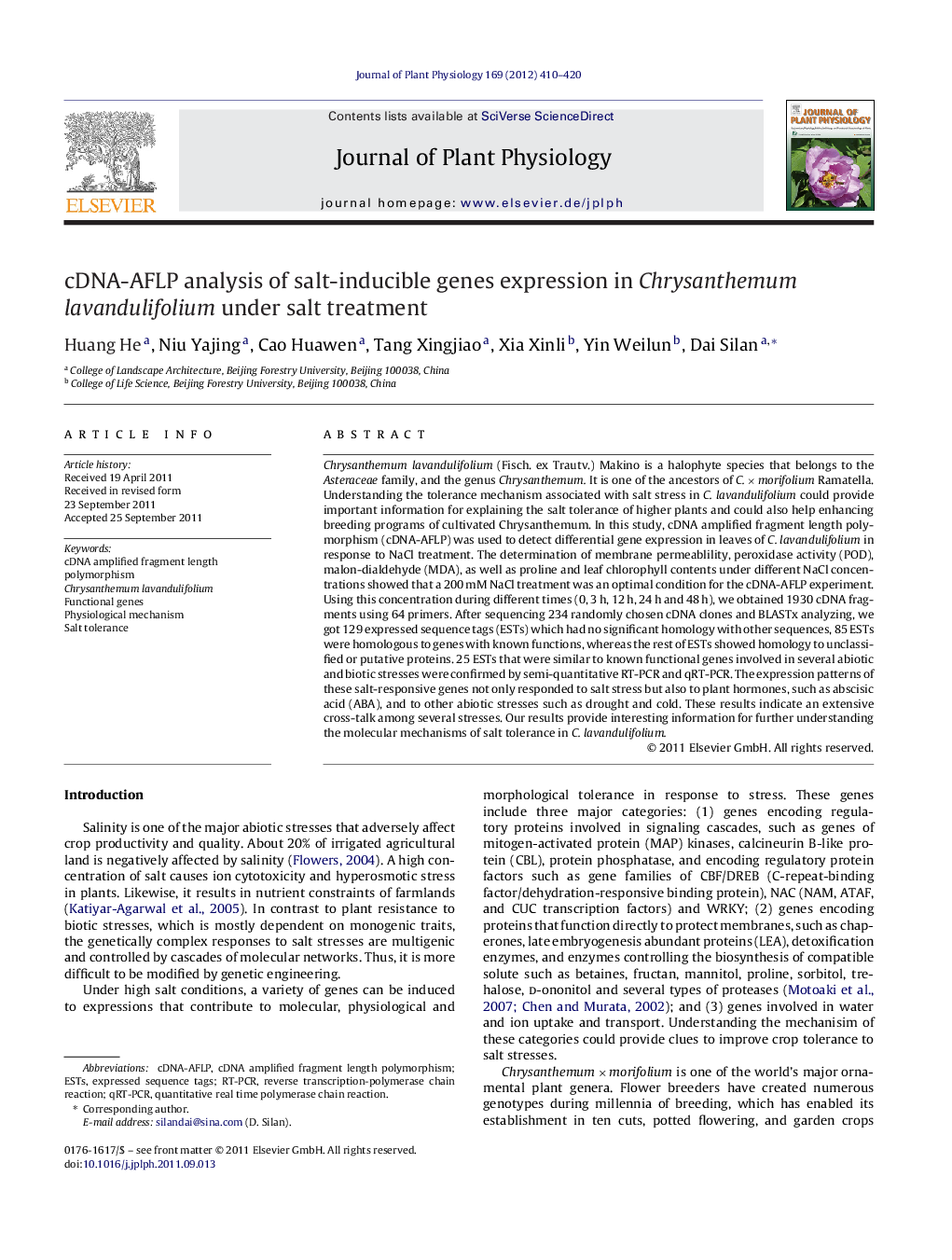| کد مقاله | کد نشریه | سال انتشار | مقاله انگلیسی | نسخه تمام متن |
|---|---|---|---|---|
| 2056320 | 1075816 | 2012 | 11 صفحه PDF | دانلود رایگان |

Chrysanthemum lavandulifolium (Fisch. ex Trautv.) Makino is a halophyte species that belongs to the Asteraceae family, and the genus Chrysanthemum. It is one of the ancestors of C. × morifolium Ramatella. Understanding the tolerance mechanism associated with salt stress in C. lavandulifolium could provide important information for explaining the salt tolerance of higher plants and could also help enhancing breeding programs of cultivated Chrysanthemum. In this study, cDNA amplified fragment length polymorphism (cDNA-AFLP) was used to detect differential gene expression in leaves of C. lavandulifolium in response to NaCl treatment. The determination of membrane permeablility, peroxidase activity (POD), malon-dialdehyde (MDA), as well as proline and leaf chlorophyll contents under different NaCl concentrations showed that a 200 mM NaCl treatment was an optimal condition for the cDNA-AFLP experiment. Using this concentration during different times (0, 3 h, 12 h, 24 h and 48 h), we obtained 1930 cDNA fragments using 64 primers. After sequencing 234 randomly chosen cDNA clones and BLASTx analyzing, we got 129 expressed sequence tags (ESTs) which had no significant homology with other sequences, 85 ESTs were homologous to genes with known functions, whereas the rest of ESTs showed homology to unclassified or putative proteins. 25 ESTs that were similar to known functional genes involved in several abiotic and biotic stresses were confirmed by semi-quantitative RT-PCR and qRT-PCR. The expression patterns of these salt-responsive genes not only responded to salt stress but also to plant hormones, such as abscisic acid (ABA), and to other abiotic stresses such as drought and cold. These results indicate an extensive cross-talk among several stresses. Our results provide interesting information for further understanding the molecular mechanisms of salt tolerance in C. lavandulifolium.
Journal: Journal of Plant Physiology - Volume 169, Issue 4, 1 March 2012, Pages 410–420